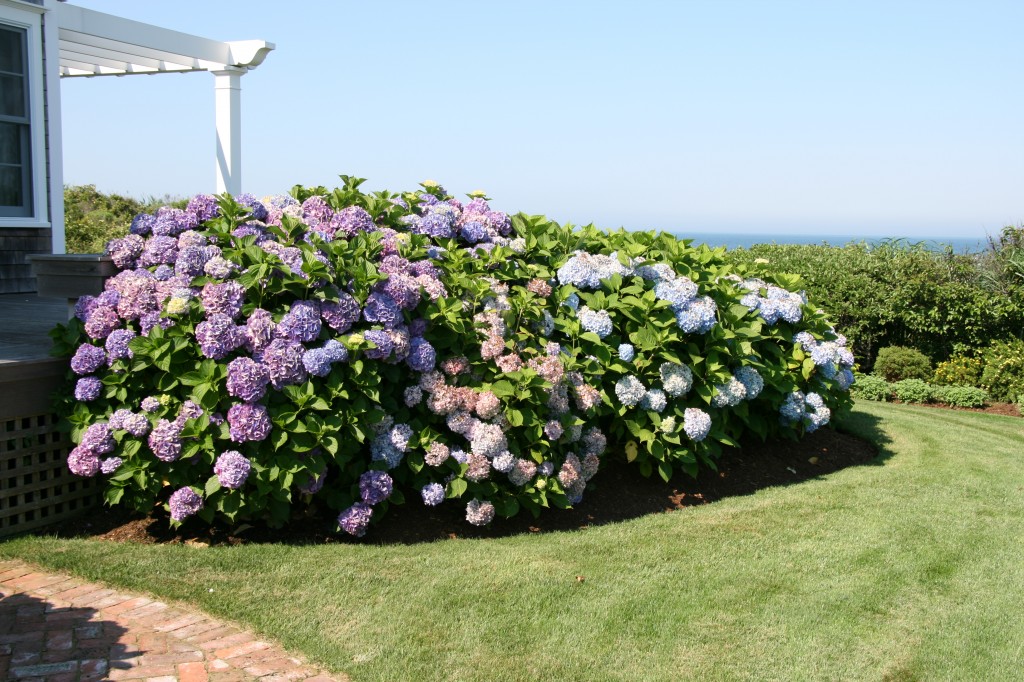Hydrangeas belong to a large and distinguished family. First to garner favor in the eighteenth century, when European and particularly English plant collectors searched the globe for exotic new plants, that hydrangeas first began to appear in garden literature. The mopheaded varieties of hydrangeas were favored during the Victorian era, when excess in design, whether houses, furniture, clothing or in the garden was de rigeur. The huge, blowzy fullness of hydrangea blooms seemed just right for the over the top affectation of the time.
Long been cultivated for their lush blooms and lasting contributions to the garden, hydrangeas are more popular than ever, as cottage garden styling and richness of old -fashioned mixed borders return with vigor to garden design. Hydrangeas are appearing not only in garden plans but in textile design, china patterns and lush dried flower bouquets.
I first noticed hydrangeas when I was in my early teens. I remember seeing them in my aunt’s garden in Chatham , Massachusetts. There they were, a big tumble of vivid blue blooms, made all the more vibrant against the weathered gray of her seaside cottage.
